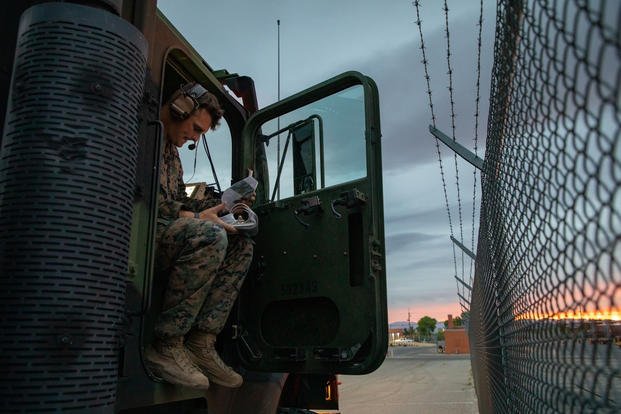After a 34-day journey that included 18 vehicles and spanned approximately 5,500 miles, Marines from Camp Lejeune's 2nd Transportation Battalion returned to their North Carolina home base last week.
The convoy, which traveled all the way to California and back, was intended to prove the Marines could operate over ground at extreme distances while maintaining communications with their command center. Each time the convoy stopped, they used high-frequency radio connections to communicate with Marines at a Camp Lejeune operations center, according to a service news release.
"This sets the bar, this is the new standard," Brig. Gen. Forrest Poole, commanding general of 2nd Marine Logistics Group, the parent unit of 2nd Transportation Battalion, said in a statement. "We're looking to replicate this in a different environment, maybe outside of the United States. It highlights the importance of Marines and Sailors trusting their equipment and ... [those] on their left and right."
Read Next: Navy Quietly Rolls Out First Maternity Flight Suits
Capt. Adam Devine, a company commander with 2nd Transportation Battalion who has served for six years, told Military.com that logistics convoys typically cover much shorter distances.
Related Video:
"They've been kept at much smaller distances, really strictly down to one area of operation, where typically what I've seen has been across 100 to 200 miles that we've had to traverse," Devine told Military.com. "Pushing this into the thousands [of miles] really just showed the capabilities of the Marines and the vehicles and being able to have endurance through missions like this."
In addition to being "one of the longest military convoys in history," the convoy also ushered in a new standard for communications experiments.
"Convoys would not typically have every type of communications asset or capability at their disposal," Devine said. "Us being able to put all of that together, from across the Marine Logistics Group for this exercise, allowed us to capture after-action points and lessons learned across all spectrums, so that we can use that in the future as we tailor our convoys to different missions."
The convoy team included 46 sailors and Marines, he said.
"The mission really ran extremely smooth," Devine said. "And it was due to really the individual efforts of the Marines and their professionalism on the road, really keeping the vehicles going, keeping each other going, keeping focus forward on the mission at hand, and really ... treating every day as its own individual mission getting to the next objective location."
Devine said he was especially proud of how the team maintained focus throughout the mission, even while "interfacing with some towns and cities across America and stopping at truck stops along highways."
Moving forward, Devine said that he will remember how committed his Marines were to finishing the mission.
"What's going to stick out in my mind is, when we got to Twentynine Palms in California, and I had to get in front of my Marines, and say, 'Well, we're only halfway there, now we have to go back,'" Devine said. "Seeing that the heads go down for a second and then pop right back up and see it in their eyes that they really wanted to finish this mission and go the full distance on the way back, that really, really picked me up. It kept me going through it as well."
Related: Army Eyes Autonomous Convoys to Prevent Future Casualties













